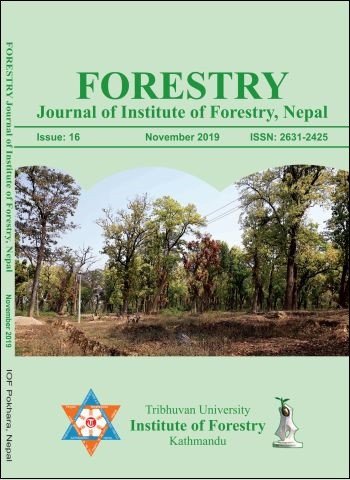Antifungal Activity of Plant's Essential Oils against Post Harvest Fungal Disease of Apple Fruit
DOI:
https://doi.org/10.3126/forestry.v16i0.28361Keywords:
Fungitoxicity, hydrodistillation, pathogenicity, bioactive compounds, rot disease in appleAbstract
Bioactive natural compounds are developed as alternatives to synthetic fungicides for the control of rot diseases of apple fruit. The antifungal activity of essential oils exudes from five plants, namely, Cinnamomum tamala, Lantana camara, Ageratina adenophora, Citrus limetta and Eucalyptus citriodora were evaluated in vitro against Colletotrichum gloeosporioides, Fusarium oxysporum and Alternaria alternata causing postharvest rot disease in apple fruits. The pathogens were isolated from infected apple fruits collected from local markets of Kathamandu, Nepal. The essential oils were extracted through hydro-distillation process using Clevenger apparatus. The pathogenicity test was confirmed by inoculating pathogen into healthy apple fruit. The assessment of fungi toxicity was carried out by poison food technique using five different concentrations: 2.5μl/ml, 5μl/ml, 10μl/ml, 20μl/ml and 40μl/ml and controls were set to determine percentage inhibition of mycelial growth to test fungi. Among tested five essential oils, Cinnamomum tamala showed most effective antifungal activity against all three pathogens, which inhibited mycelium growth by 100% at 40 μl/ml concentrations. However, Eucalyptus citriodora showed all three pathogens inhibited mycelium growth by 65.87%, 73.17% and 86.91%, respectively at 40 μl/ml concentration.
Downloads
Downloads
Published
How to Cite
Issue
Section
License
© Tribhuvan University, Institute of Forestry




